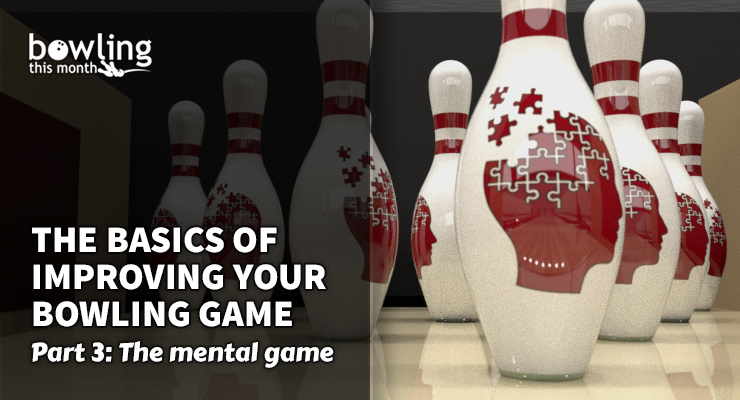Article Contents
- 1. Self-talk
- 1.1. Basic concepts
- 1.2. Advanced concepts
- 2. Focus
- 2.1. Basic concepts
- 2.2. Advanced concepts
- 3. Pre-shot routine
- 3.1. Basic concepts
- 3.2. Advanced concepts
- 4. Conclusion
Note: This article is only available to Bowling This Month subscribers.
In the first two parts of my Basics of Improving Your Bowling Game series, we looked at both the tactical elements of bowling and the physical game. In this month’s final installment, we’ll look at the mental game, covering three key concepts from the mental side of bowling: self-talk, focus, and the pre-shot routine.
More often than not, beginning bowlers focus on the physical parts of the game, to the detriment of the mental part. Even advanced bowlers sometimes misunderstand the relationship between the mental game and the physical game. This article will aim to go over the basics and more advanced applications of these different mental tools, so that all bowlers can improve their mental approach to bowling.
Self-talk
Basic concepts
Self-talk is exactly what its name implies: how to talk to yourself. Generally speaking, we are much nicer to other people and our teammates than we are to ourselves. For example, it is unlikely that you’d berate a teammate for missing a spare. But, when we miss a spare ourselves, the response is almost always extreme negativity toward ourselves. “That was stupid.” “You’ll never be good if you can’t make that spare.” “No wonder you’re the lead-off bowler!”
This kind of self-talk is exactly the kind of thing that harms confidence and delays improvement. There is a fine line between being confident and being arrogant, but beginning bowlers are often nowhere close to this line. One of the first things you can learn in your mental game to help you improve is to talk to yourself like you’d talk to a teammate.
Using positive statements to encourage yourself is only one part of it. The other part of effective self-talk is speaking in terms of things you want to do rather than things you want to avoid.
Many people have likely already heard the saying, “Whether you think you can, or you can’t, you’re probably right.” But let’s take it a step further by saying that whether you say what you want, or you say what you don’t want, either one will become true.
For example, don’t think about a pink elephant. 99% of you just thought of a pink elephant. Your brain works in images and the word “don’t” has no real meaning. In bowling terms, “Don’t throw it in the gutter” primes your brain to do exactly that because it pictures throwing the ball in the gutter. There are plenty of examples of negative self-talk that can easily be replaced by statements of intent.

Replace negative statements of avoidance with positive statements of intent in your self-talk.
When you catch yourself talking to yourself like you’re your own worst enemy, or using statements of avoidance, replace them with positive self-talk and you’ll be amazed by the results.
Advanced concepts
How do you make a concept like self-talk more advanced? By tying it to your belief and your confidence. The reason positive self-talk works is because it will help build the belief system that supports the achievement of your goals. For more advanced bowlers who might already have long-term goals or high aspirations, the foundation of achieving these goals is your ...
Already a premium member? Click here to log in.


